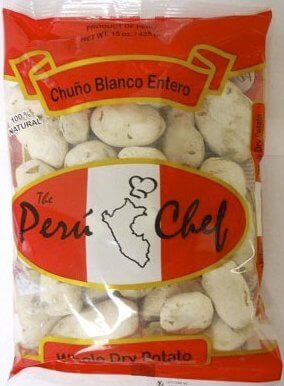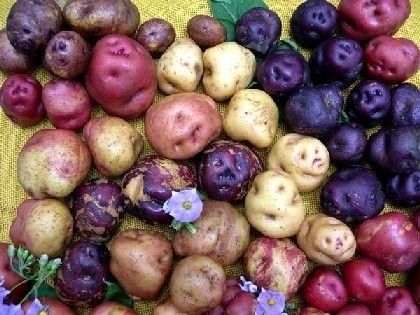Chuño
chuno
Chuño is a preserved potato product traditionally made by Quechua and Aymara communities of Bolivia and Peru, and is known in various countries of South America, including Bolivia, Peru, Chile and Northwest Argentina. It is a five-day process, obtained by exposing a bitter, frost-resistant variety of potatoes to the very low night temperatures of the Andean Altiplano, freezing them, and subsequently exposing them to the intense sunlight of the day (this being the traditional process). The word comes from Quechua ch'uñu, meaning 'frozen potato' ('wrinkled' in the dialects of the Junín Region). The existence of chuño dates back to before the time of the Inca Empire in the 13th century, based on findings that have been made of the product at various archaeological sites.[citation needed] Specifically, they have been found at Tiwanaku, site of a culture which developed in the Collao Plateau, a geographic zone which includes territories of Bolivia and Peru.[citation needed] It had been described in 1590 by Spanish chronicler José de Acosta. Due to its portability, long shelf life, and nutritional value, chuño was eaten by Inca soldiers on marches. Indeed Carl Troll argued that the nighttime sub-freezing temperatures of southern Peruvian highlands that allowed for chuño production favoured the rise of the Inca Empire.
Source: Wikipedia
Recipes




